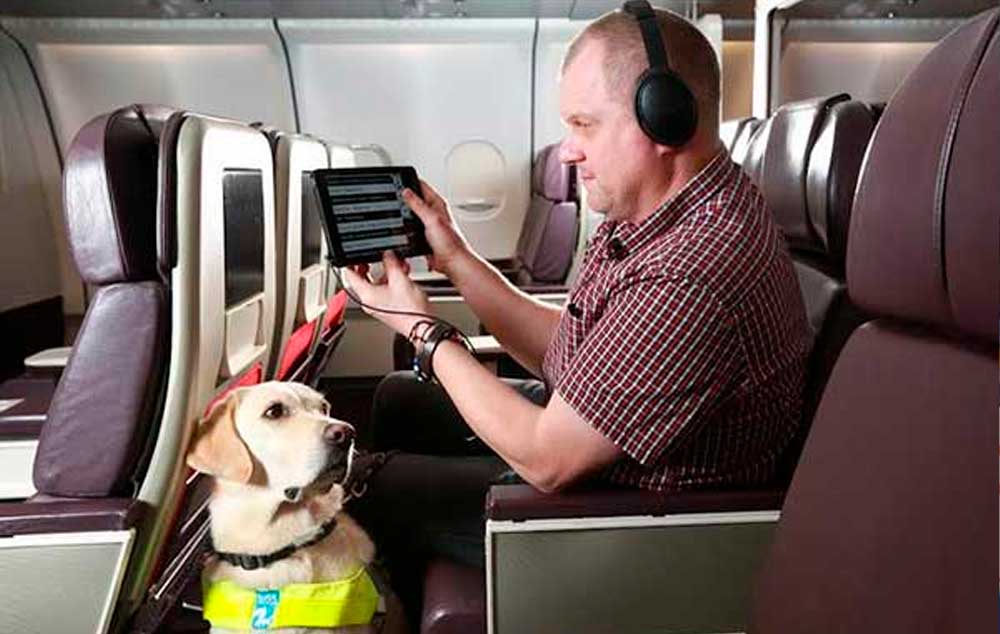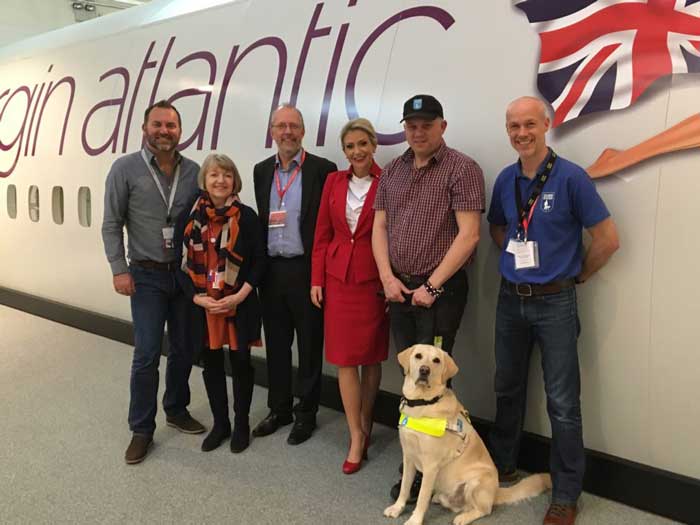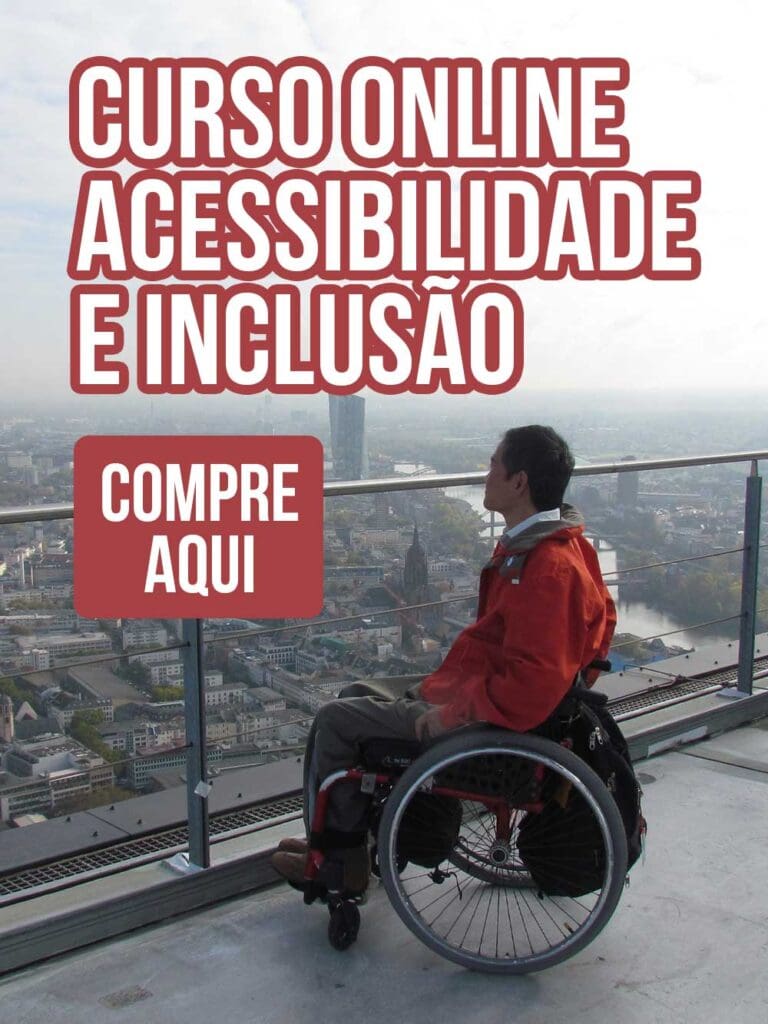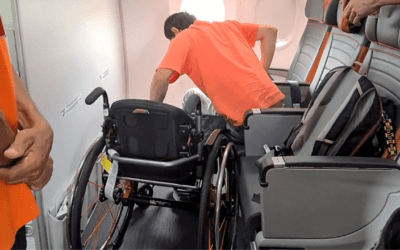
In-Flight Entertainment Accessible for Visually Impaired Passengers
Brown was part of the team, made up of representatives from Bluebox Aviation Systems, Virgin Atlantic and The Guide Dogs for the Blind Association, that developed an accessible IFE platform (aIFE) for the airline’s visually impaired passengers. The platform launched on December 1, making Virgin Atlantic the first global airline to offer accessible IFE to passengers with sight loss, across its entire fleet. Because aIFE uses the Bluebox Ai solution, which is a portable platform, it expedites the fleet-wide delivery of accessible IFE to airlines and presents an alternative to upgrading existing systems.
What is the key to designing accessible IFE for visually impaired passengers?
Involve target users of the solution – people with actual visual impairments. Be sure to address a range of impairments, such as sensitivity to brightness, ability to distinguish high contrast elements on screen, ability to use if text/video size is large enough (ultra high zoom levels) and total sight loss where audio description is the only solution. We quickly realized that we had to build multiple methods of access into the GUI to make it useful for the maximum number of different types of visual impairments.
Ensure some members of the user group are familiar with accessibility features of the technology – they were very helpful in guiding us in what is useful and what elements can be omitted. But remember, not everyone is familiar with touchscreen technology or what is typically included in an IFE platform, especially in this community where the move to touch screens made IFE less accessible than it had been previously. Some members of our user group were totally new to tablets – home buttons and swiping left were foreign concepts for them – so we had to go back to the basics of tablet and touchscreen use before even approaching how to navigate IFE content menus.
Consistency of GUI features, simplicity in design and ease of use are critical. Keep things like the information button in the same place on each page, so the user knows where to tap to go back to the instructions should they need a reminder.

We started with our Bluebox Ai solution. As it’s a portable platform, we knew we had the potential to offer something that could expedite the fleet-wide delivery of accessible IFE to airlines facing the challenges of upgrading mixed fleets with different types and vintages of IFE systems. With fair and equal access to the same IFE content being one of the key issues behind the drive for accessible IFE, we knew that the provision of early window content (EWC) would add to the challenge.
As Bluebox Ai is Hollywood-approved for EWC, we just needed to redesign the GUI and then passengers with sight loss could access the same IFE content as the person next to them. Our user group member Paul Smith makes this point well in the video below – he’s excited to know that when he flies with his children on Virgin Atlantic, he can enjoy the same Hollywood blockbuster comedy as them and laugh along with them.
What kind of research was done to prepare?
Asking for input from the intended user group was critical. It was an iterative process with face-to-face sessions where the group could experience, and provide input on, different versions of the platform. Bluebox is a member of APEX’s Accessibility Working Group, so we were already aware of legislation and what’s happening across the industry with respect to accessibility, but we also looked at accessible travel market trends and the issues airlines have faced by not offering IFE for visually impaired passengers – it was clear there is a need, from both passengers and airlines, and an opportunity for us to deliver a solution.
Though we knew iPads are the market-leading tablet for people with visual impairment, we had to research Apple iOS accessibility functionality – how to leverage the substantial built-in accessibility features and further enhance the devices for IFE-specific requirements. For example, we already do GUI translations for Bluebox Ai, so understanding the extent of the iOS’ capabilities for different languages meant we could develop the aIFE platform to meet different market requirements. For example, the VoiceOver feature supports 30 languages, so we’re able to aIFE as a solution for airlines across many different regional markets.
Can you identify any sources of inspiration?
Our initial inspiration was a presentation by Air Canada and what they were doing with their IFE GUI for visually impaired passengers. Designing an accessible GUI is well within our skillset, and realizing that doing so on a portable solution could actually help airlines achieve fleet-wide accessible IFE faster inspired us to get our development team working on a mock-up based on our Hollywood-approved Bluebox Ai platform.
We knew we’d need an airline sponsor so we asked Virgin Atlantic if they’d be interested in collaborating. As a long-standing customer, we were aware of their commitment to accessibility, and their relationship with the charity Guide Dogs helped us get introductions to a group of users willing to provide their input on the project.
But our user group was the real inspiration for us more broadly – they taught us so much about their experiences as people using tablet technology and as passengers experiencing airlines’ special assistance support, and why this project was so important to them (independence, personal control, equality). It’s inspiring for us to know we could play a role in bringing equality and independence to their passenger experience, not just in-flight entertainment.
What was the most critical stage in the process?
Absolutely the most critical stage was establishing a user group to get user input into the development. That said, this is a new solution for the commercial aviation market, so we couldn’t ignore the fact that from our perspective as solution providers, our stakeholders are airlines as well as users, both with different types of needs. So this had to be a three-way development project – with us as the developers, our user group providing critical design input, and of course our airline partner with whom we worked to address the content, logistical and crew training elements involved.
What were the main challenges faced by your team?
Not letting our personal experience with IFE systems and touchscreen technology unconsciously bias our design assumptions – having our user group kept that in check!
Any other important information, guidance or tips?
Though we’ve developed a powerful solution for delivering accessible IFE for passengers with sight loss, we know technology alone won’t solve the problem entirely. Bluebox aIFE is a platform that has to be filled with content – and that’s where we and our airline customers have to look outward to the studios and other content providers. Though the availability of subtitle tracks and closed captions is extensive, the same can’t be said for audio-described content.
We hope that those who create and distribute content will continue to expand the titles available with AD and geared towards the interests of this community, so that airlines can offer an even richer content set for passengers with visual impairments. We know it’s out there to an extent – in fact, at APEX EXPO, one content provider got in touch with details of their content designed, produced and aimed at people with sight loss. There’s so much more to be done – as an industry working together we can do it!
Compartilhe
Siga-nos!
Envolva-se em nosso conteúdo, seus comentários são bem-vindos!
Acessibilidade no transporte aéreo. Atualização das regras.
Acessibilidade no transporte aéreo. Revisão da Resolução nº 280/2013 da ANAC através de consulta e audiência pública.
Inclusão no filme Wicked. Atriz cadeirante chama a atenção.
Inclusão no filme Wicked. Marissa Bode é uma atriz com deficiência na vida real, e sua deficiência não foi um impedimento para a atuação.
Diretrizes da ANPTUR para o Turismo Brasileiro
Diretrizes da ANPTUR para o Turismo Brasileiro. Acessibilidade é um dos capítulos desse importante guia orientador para o turismo.






0 comentários